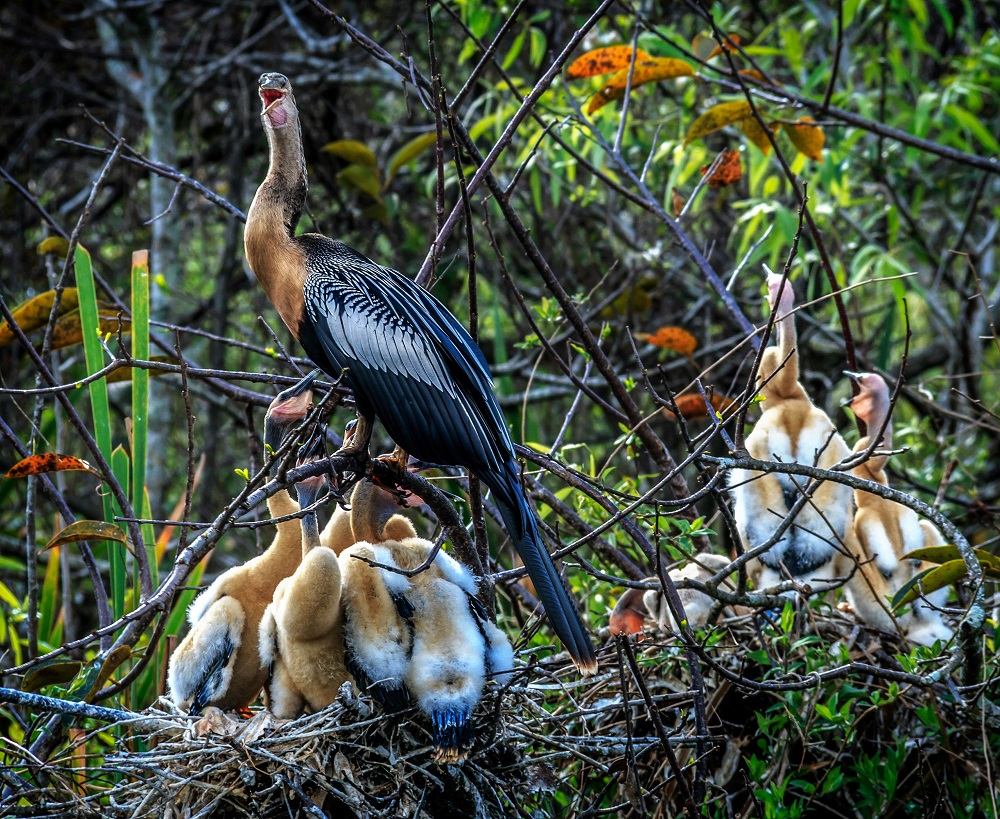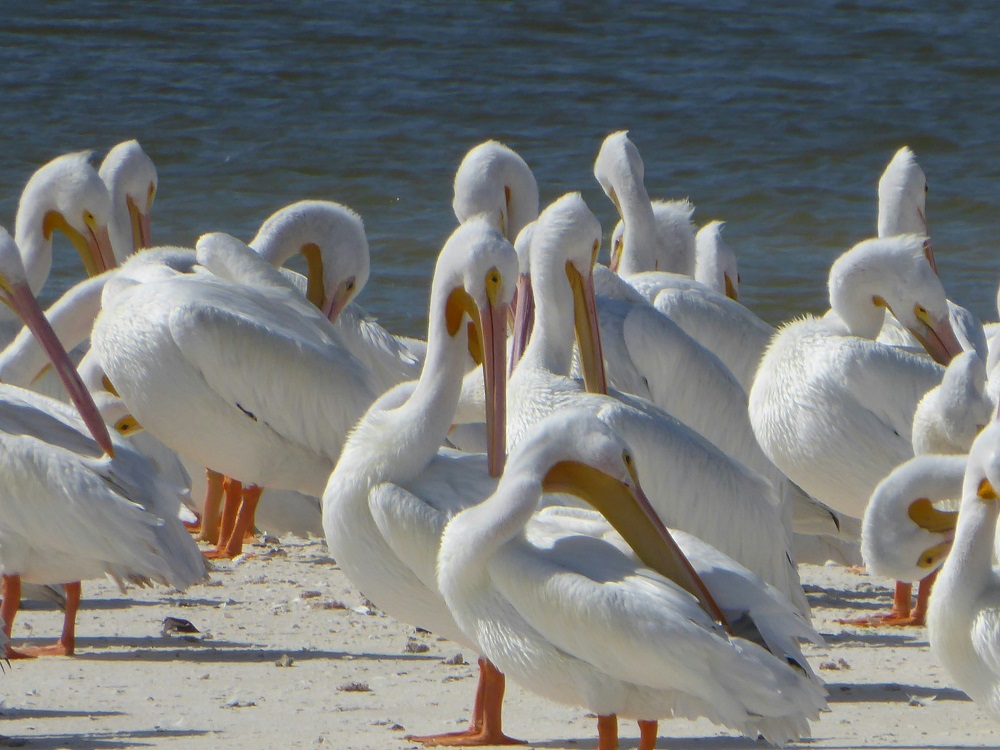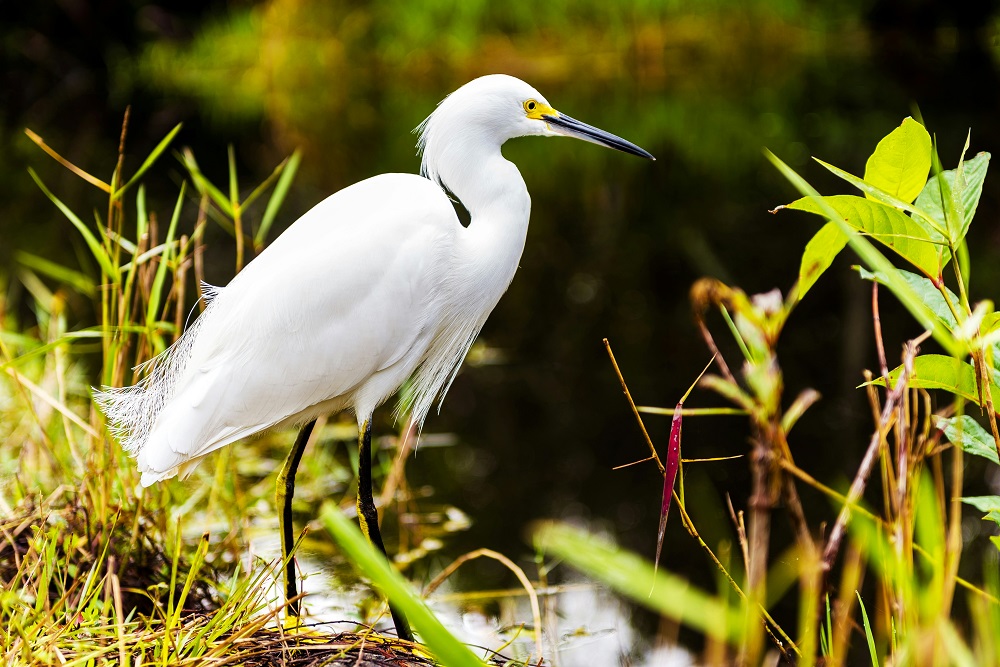Everglades National Park is a haven for birdwatching enthusiasts. with its diverse ecosystems, ranging from mangrove forests to sawgrass marshes, where over 350 kinds of birds live, making it a paradise for nature lovers as well as bird watchers. From the iconic Great Blue Heron to the rare Roseate Spoonbill, you get a chance to witness the avian life in its natural habitat. From the key birding hotspots to the tips to enhance your birdwatching experience, here is everything you need for Birdwatching in Everglades National Park.
Birdwatching in Everglades National Park
One of the highlights of birdwatching in Everglades National Park is the diversity of bird species that reside here. With each season, different species of birds flow in, merging with the existing species to create a vibrant birdlife. As you walk along the way, following the trails and waterways, you will find many unique birds from the small warblers to big raptors. Some birds walk in the water like herons and egrets, others hunt for food like ospreys and bald eagles and then there are so many colourful birds to see. And by the way, if you are enjoying the post so far and excited to read further about birdwatching in Everglades National Park, I recommend you to read my blog on Fern Canyon, also known as California’s enchanting hiking gem.
Explore the Key Birdwatching hotspots in Everglades National Park

- The Anhinga Trail – It is near the park’s main entrance, where you can find lots of water birds like the anhinga, purple gallinule, and black-crowned night heron. It offers easy access to prime birding Habitat, especially during winter.
- The Shark Valley Observation Tower – It provides panoramic views of the Everglades’ vast sawgrass prairies where birds like roseate spoonbills, white ibises, and wood storks can be spotted.
- The Flamingo area – Located at the south of the park, this area has mangrove forests and coastal spots. You can find a lot of shore birds as well as sea birds.
- Eco Pond – This area is perfect to spot wading birds and waterfowls.
- Mahogany Hammock – This area is lush green and consists of a lot of songbirds as well as Woodpecker and warblers.
- Pa-hay-okee Overlook – This area offers a panoramic view of the prairies and is a great place to spot raptors.
Everglades National Park: Home to Rare Bird Species

The Everglades National Park isn’t just a home for common birds but it is also a safe haven for rare and endangered ones. The National Park team helps in providing a safe habitat for these rare species. While wandering the area the Birdwatchers might see some rare birds such as Cape Sable seaside sparrow and the snail kite, both of which are listed as endangered.
Tips to make the most of your birdwatching experience in Everglades National Park
- Binoculars and Field Guides: A good pair of binoculars and a field guide can enhance your ability to identify and appreciate the birds you encounter.
- Visiting During Peak Birding Seasons: Winter and spring are typically the best times for birdwatching in the Everglades due to migration to the area.
- Bring a good quality camera and a microphone: A good camera and a microphone is very important if you are a nature or a bird enthusiast.
- Have Patience and Be Observant: Birdwatching requires patience and keen observation skills. Take your time to scan the trees, marshes, and waterways for signs of bird activity, and listen for distinctive calls and songs.
- Respect Wildlife and Their Habitat: Remember to observe birds from a respectful distance and avoid disturbing nesting sites or sensitive habitats.
Conclusion
Everglades National Park offers an amazing experience to the experienced bird watcher as well as the beginners. Its awe-inspiring beauty and abundance of avian life will be an unforgettable experience. So pack your bags and get your cameras ready for this adventure.
FAQs =》
Q1. What is the best time to go birdwatching?
Ans. Winter and Spring are the best times for birdwatching as a lot of migratory birds come in to find food and raise their young ones.
Q2. What types of birds are there in Everglades National Park?
Ans. Birds such as Herons, Egrets, Ibises, Spreys, Bald Eagles, Songbirds, Shorebirds, Waterfowl, and even rare and endangered species like the Cape Sable Seaside Sparrow and Snail Kite.
Q3. Are there any guided birdwatching tours available in the park?
Ans. Yes. The park offers a wide variety of guided tours led by experienced park rangers.
Q4. What equipment do I need for birdwatching?
Ans. Binoculars, a field guide, a good camera and a microphone along with comfortable clothing and good shoes are a must for birdwatching.
Q5. Are there any special regulations or guidelines for birdwatching in the park?
Ans. While there are no hard and fast regulations for birdwatching, it is always important to respect the wildlife and their habitat.
Q6. Can I see rare or endangered birds in Everglades National Park?
Ans. There are several rare and endangered bird species including the Cape Sable seaside sparrow, snail kite, and wood stork but their sightings are less common.


